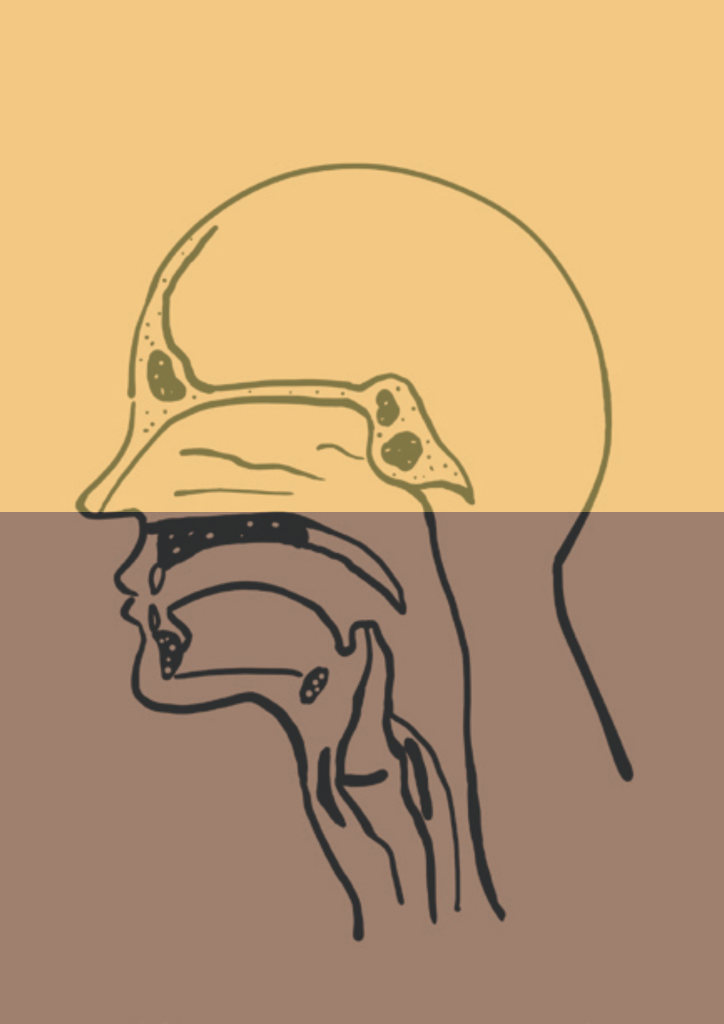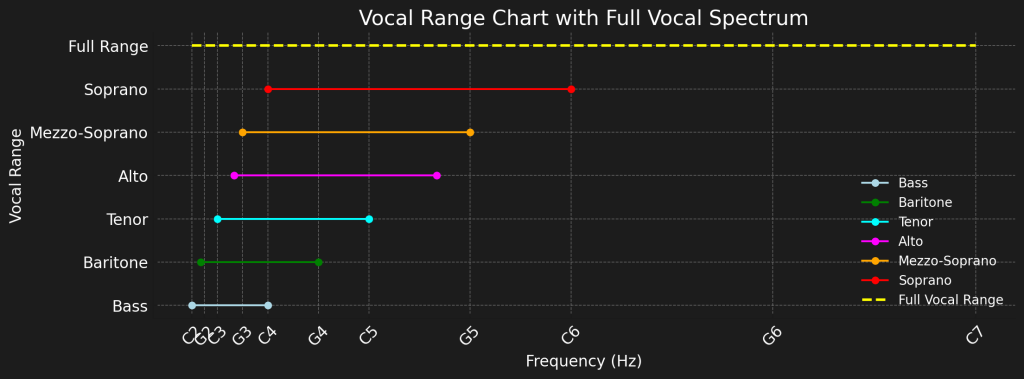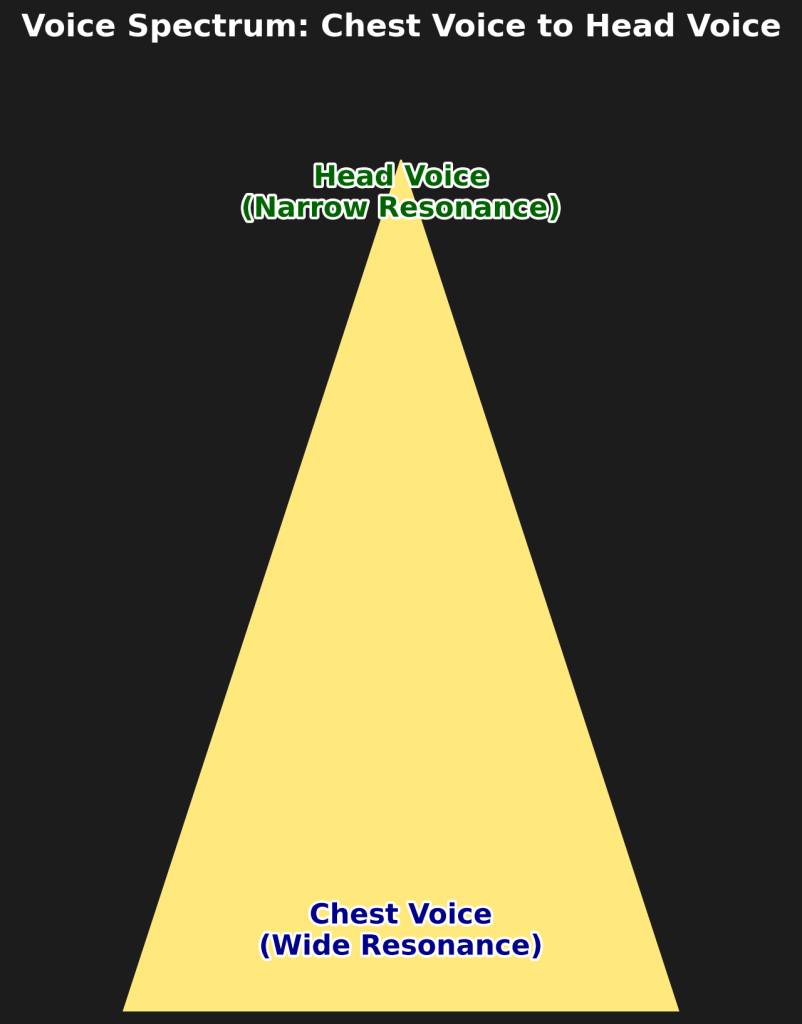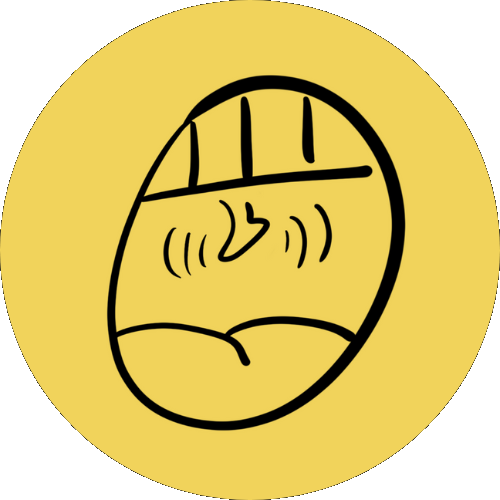As an affiliate for Amazon and SkillShare, I earn from qualifying purchases. This means that if you click on one of my affiliate links and make a purchase, I may earn a small commission at no additional cost to you. Thank you for supporting my work!
OPEN TO SEE TABLE OF CONTENTS
Table of Contents
Mastering your head voice is essential for achieving a full, versatile sound. Today we will explore why is crucial for singers, delve into seven techniques to master it, compare it with chest voice and falsetto, and provide practical exercises to improve it. By the end of this blog, you’ll have a clear understanding of how to use it effectively and confidently. Let’s dive into the intricacies of this vocal register and learn how to master it.
Understanding Head Voice
Definition
The head voice is a vocal register that resonates (vibrates) primarily in the head and upper throat, allowing singers to reach higher pitches with a lighter, more resonant sound.

Importance in Singing
This register is crucial for expanding vocal range, achieving a versatile sound across different genres from classical to pop music, and developing a strong mix voice and belting technique. To fully develop any type of voice, a strong coordination of this register is necessary to achieve your full vocal potential. Without it, singers will often feel like something is lacking, usually translating into a lack of powerful high notes with ease. Therefore, whether male or female, do not neglect this register. In the following image, you will find a visual representation of the different vocal ranges:

Physiology
The register involves the vibration of the thinner edges of the vocal cords, creating a lighter sound compared to the chest voice, which resonates in the mouth and chest cavity.

Differences between Chest Voice, Head Voice, and Falsetto
| Characteristic | Chest Voice | Head Voice | Falsetto |
|---|---|---|---|
| Resonance Area | Mouth and chest cavity | Head and upper throat | Mouth, chest, or head |
| Sound Quality | Fuller, deeper sound | Lighter, more resonant sound | Breathier, lighter sound |
| Vibrations Felt | Primarily in the mouth and chest area | Higher up, in the head or sinuses | Often felt in the head area |
| Characteristic Notes | Strong, powerful notes | Allows for higher pitches with a more controlled and clear tone | Used to reach very high notes but lacks full resonance and strength of head voice |
| Common Use | Singing in lower to mid-range pitches, providing power and depth | Singing in higher pitches with control and clarity | Singing low or high notes with an airy quality, often used in genres requiring softer, higher pitches |
| Closure of Vocal Cords | Vocal cords are fully closed when producing sound | Vocal cords are fully closed but vibrate differently to produce higher pitches | Vocal cords are not fully closed, leading to a breathier sound |
| Strength | Strong, powerful, and rich | Controlled, clear, and resonant | Lighter, lacks the full strength of chest and head voices |
Head Voice vs Chest Voice
Try to visualize the entire voice spectrum as a pyramid. The base of the pyramid represents the chest voice with its wide resonance, while the top of the pyramid represents the head voice with its narrow resonance. The transition between these two extremes is gradual, with the voice changing in resonance and placement as you ascend in pitch.

In the following video you will find an example of this concept, and how to put it into practice:
Examples of Head Voice in Classic Songs
Here are some classic songs from different decades that showcase this vocal register beautifully:
- 1980s:
- Song: “Take On Me”
- Artist: a-ha
- Description: The song features Morten Harket’s impressive vocal range, particularly in the chorus sections, making it a great male example of the usage of this register in pop music.
- 1990s:
- Song: “I Will Always Love You”
- Artist: Whitney Houston
- Description: Whitney Houston’s rendition of this song features her powerful and controlled vocal ability, especially in the chorus and the climactic final note. Her impeccable technique and emotional delivery make this a quintessential example of head voice in pop music.
- 2000s:
- Song: “Bleeding Love”
- Artist: Leona Lewis
- Description: This song features Leona Lewis’s powerful voice, particularly in the emotional and soaring choruses. Her ability to transition between registers adds depth and intensity to this track.
- 2020s:
- Song: “Drivers License”
- Artist: Olivia Rodrigo
- Description: This recent hit highlights Olivia Rodrigo’s emotional delivery and her ability to transition smoothly between registers during the chorus, adding character and intensity to the song.
Listening to these hits can give you a practical understanding of how head voice can be used effectively in different musical styles.

My top Subscription Deals Just For You
Audible Plus Membership
2 Months Free!!!
Enjoy a vast library of audiobooks and exclusive podcasts.
Amazon Music Unlimited
Free Trial!!!
Enjoy a vast library of Music and exclusive podcasts.
Kindle Unlimited
Free Trial!!!
Unlimited access to over a million books and audiobooks.
Controversies on the Definition and Use of Head Voice vs. Falsetto
One of the most contentious topics among vocal coaches and singers is the difference between head voice and falsetto. While some argue that these terms refer to the same vocal technique, others believe they involve distinct mechanisms and resonances.
Proponents of Similarity
Some experts, argue that head voice and falsetto are essentially the same, differing only in the terminology used across different vocal traditions. Ken Tamplin
Proponents of Distinction
On the other hand, other experts contend that head voice involves a more connected and resonant sound, while falsetto is lighter and breathier, often lacking the full vocal cord connection. Brett Manning
My Perspective
I recognize the distinctions between the two terms as important for understanding the voice. However, in practical singing, these distinctions often blend. Singing naturally involves a mix of vocal coordinations where the song may demand a headier, breathier, or mixed sound at different moments. Therefore, while it’s essential to understand the differences for technical mastery, the focus should be on applying these techniques to enhance the overall performance and meet the musical demands of the song.
This debate highlights the complexities and nuances in vocal training, suggesting that there may be more than one correct approach. But in the end, the most important thing happens in the singing itself. Whether you lean towards head voice or falsetto, what truly matters is how you blend and use these techniques to create your own sound.

My top Mic Recomendations
| Category | Product | Description & Links |
|---|---|---|
| Recording Equipment | Shure SM7B | A popular dynamic microphone known for its warm, smooth sound ideal for studio recording. Amazon US Amazon CA |
| Rode NT1-A | A condenser microphone with extremely low self-noise, making it perfect for clear vocal recordings. Amazon US | |
| Rode NT1-A-MP | A condenser microphone with extremely low self-noise, perfect for clear vocal recordings. Amazon CA | |
| Audio-Technica AT2020 | A budget-friendly condenser microphone praised for its high sound quality and versatility. Amazon US Amazon CA | |
| Neumann TLM 103 | A high-end condenser microphone renowned for its clarity and precision in capturing vocals. Amazon US | |
| Neumann TLM 103 (Black) w/ Suspension Shockmount & Pop Filter | A high-end condenser microphone renowned for its clarity and precision in capturing vocals. Amazon CA |
7 Techniques to Master Your Head Voice
1. Use the ‘what’ sound
Say the word ‘what’ in a very casual, surprised manner, as if you can’t believe something. Most of the time, people naturally go into a very high-pitched voice without even noticing. (The explanation is provided in the video above.)
2. Sigh your way up
Take a deep breath and then let out a long, relaxed sigh, like you’re relieved or tired. As you sigh out, notice how your voice naturally goes higher and lighter. (The explanation is provided in the video above.)
3. Bwoop it
Make the sound ‘bwoop’ and let your voice slide upwards quickly. Without straining, just let the speed of the sound naturally make your voice go higher and higher until it feels tiny and light. That’s when you’ll find your head resonance. (The explanation is provided in the video above.)
4. Octave Leaps
Sing an octave leap with a ‘mum’ sound, and starting from a comfortable note jump into the octave. Aim for a smooth and effortless transition. The following video will show you a simple way to do it.
5. Lip Trill
Do a lip trill by blowing air through relaxed lips to create a “brrr” sound. Start at a mid-range pitch and gradually move higher, feeling the transition into a higher resonance. Then, let go of the lip trill and hold the note. The following video will provide you with a practical guide to the exercise.
6. Breath Support
Ensure you have proper breath support by practicing diaphragmatic breathing. Good breath control is essential for maintaining a strong and steady head voice. In fact, in my humble opinion, if you haven’t mastered this, you are probably missing out on 60% of your vocal potential.
7. Record, listen and adjust
Record yourself performing these exercises. Listen for the gradual shift from a full to a light voice. Adjust your technique based on what you hear.

My Top 3 Portable Recorders for Different Budgets
| Budget | Tool | Description & Link |
| High-End | Zoom H4n Pro Handy Recorder | Versatile recorder with high-quality X/Y stereo microphones, 4-track recording, and up to 24-bit/96 kHz resolution. AMAZON |
| Mid-Range | Tascam DR-05X Portable Audio Recorder | Affordable recorder with built-in stereo condenser microphones, WAV/MP3 support, and long battery life. AMAZON |
| Low Budget | Sony ICD-UX570 Digital Voice Recorder | Compact recorder with high-sensitivity microphone, noise reduction, and USB direct connection. AMAZON |
Usage Scenarios
- Head Voice: Ideal for high notes, softer dynamics and mixed voice.
- Chest Voice: Suitable for adding power to the voice, from the lower to the highest register.
In this example Liam Tamne shows how to use all of his registers, adding blends of head, falsetto, chest, pharyngeal and mixed voice.
Diagram of Vocal Cords in Action



My Top 3 Must-Reads for Serious Learners
Vocal Wisdom: Maxims of Giovanni Battista Lamperti
This classic book provides timeless advice on vocal technique, including insights on head voice from one of the most respected vocal teachers. It is a valuable resource for singers looking to refine their vocal skills.
Bel Canto: A History of Vocal Pedagogy
James Stark’s book delves into the history and techniques of classical singing, with detailed discussions on head voice. It is an excellent resource for singers and vocal teachers interested in traditional vocal techniques.
The Naked Voice: A Wholistic Approach to Singing
This book offers a comprehensive approach to singing, covering techniques for developing a strong head voice. It emphasizes the integration of body and voice to achieve a natural, powerful sound.
Common Mistakes and How to Avoid Them
- Pushing Too Hard: Leading to strain and vocal damage.
- Neglecting Breath Support: Results in a weak or unstable head voice.
- Ignoring Transitions: Causing noticeable breaks between registers.

Solutions and Tips For Strainers & Pain
Relax Your Throat
Focus on breath support and gentle onsets.

Consistent Practice
Incorporate daily sustainable exercises and monitor your progress.

Smooth Transitions
Use slides and octave leaps to connect registers.
NEED HELP?
Unlock Your Vocal Potential
Let’s work together to unlock your full potential and make your voice shine. With personalized coaching and expert techniques, we’ll transform your singing. Join me and let’s make your voice unforgettable.

Conclusion
Mastering head voice is crucial for singers who want to expand their vocal range and versatility. By understanding the differences between the various vocal registers and practicing targeted exercises, you can improve your technique and enhance your overall singing. Make sure you do this:
- Understand the Basics: Know the physiology and purpose of your voice.
- Sustainable Practice: Dedicate time to specific exercises.
- Avoid Common Mistakes: Focus on proper technique and and don’t push your voice.
- Keep a Positive Perspective: Choose to view your skill as something enjoyable and progressively achievable, then get to work.
OPEN TO READ FAQs
FAQs
Q1. What does your head voice mean?
A. Head voice refers to the vocal register that resonates in the head and upper throat, allowing singers to produce higher pitches with a lighter sound.
Q2. Can everyone use head voice?
A. Yes, with proper technique and practice, anyone can develop it and use effectively.
Q3. Is head voice harder than falsetto?
A. Head voice and falsetto require different techniques. Head voice involves more precise control of the vocal cords, making it more challenging for some singers.
Q4. How do I find my head voice?
A. Practice a lip trill starting from the bottom of your range and slide up until you feel a release into your head resonance. Then, open your mouth and sustain the note. That is your head voice.
Q5. Is head voice only for female singers?
A. No, both male and female singers can develop and use this voice effectively. Developing this coordination can help male singers achieve higher pitches and a more versatile vocal range.
Unlock Your Vocal Potential
Let’s work together to unlock your full potential and make your voice shine. With personalized coaching and expert techniques, we’ll transform your singing. Join me and let’s make your voice unforgettable.

Socials





